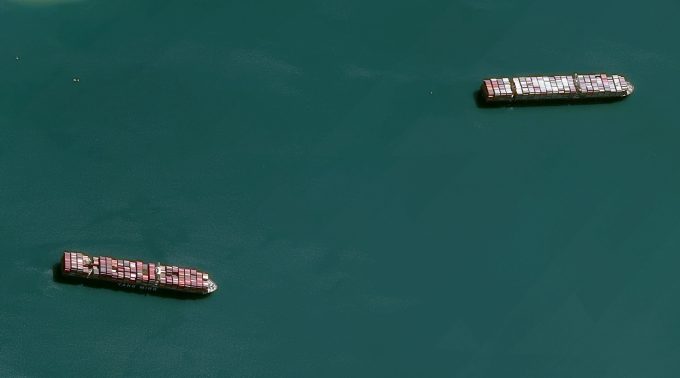No early end to Red Sea crisis in sight as carriers re-route
Carriers appear to have given up hope that the threat to vessels transiting the Red Sea will end any time soon, and are starting to re-route back northbound through the Suez Canal, to cross the Mediterranean and around the Cape of Good Hope, costing time and money.
The major container lines had paused all routings through the Suez Canal into the waterway after a series of attacks in the Red Sea against by Iranian-backed Houthi rebels, seemingly in support of Hamas.
This included a number of Asia-bound vessels that had transited the canal but had yet to reach the Bab Al-Mandab Strait and were ordered to drop anchor and await further instruction – however, vessel tracking sites show some are now on the move.
Vespucci Maritime CEO Lars Jensen, said: “This shows carriers do not believe the situation will be resolved in two weeks.” He explained that the repeated attacks against vessels had left operators with two options: first to simply wait it out; and the alternative to revert vessels north, back through Suez and across the Mediterranean before moving around Africa.
He added: “The fact that ships are now northbound towards Suez shows the carriers do not believe the situation will be resolved soon.”
Last night, Hapag-Lloyd became the latest to confirm the rerouting, following Friday’s attack on its vessel Al Jasrah. The carrier believed sailing through the Red Sea was no longer safe and the risk to its crews “unacceptable”.
It added: “We will reassess the situation in the Red Sea regularly and reinstate our services when the situation in the area is deemed safe and secure for our ships and crews and your cargo onboard.”
Data provided by Portcast said rerouting via Africa would add seven days to South Asia-US sailings, with Asia-Europe sailings going via the Cape of Good Hope, adding 10 days.
Added to all of this are increased costs for shippers, the rerouting likely push transit and fuel costs north of $2m per vessel.
Sources suggested the additional costs may not leave carriers “too disappointed”, given their recent struggles with weaker rates. The Red Sea crisis has already added 44% to China-Mediterranean rates, according to Freightos.
As to the scale of trade effected, analysts claim there is close to 1m teu on vessels at anchor in the Red Sea awaiting instructions.
For the Egyptian economy, for which the Suez Canal is the largest cash generator, carriers not using it will be a concern, with the country already battling challenging financial conditions.
One source said there could be a short-term bump from vessels sailing back through and paying another toll, but there “wouldn’t be many”, as some ships “may just wait it out”.

